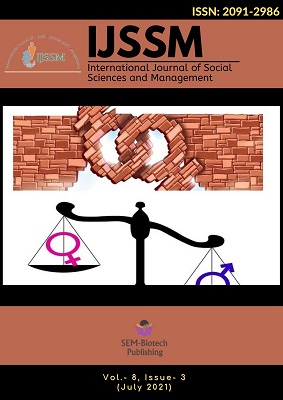Prevalence and Associated Factors of Depression among Diabetes Patients in Selected Hospital at Pokhara, Kaski
DOI:
https://doi.org/10.3126/ijssm.v8i3.38524Keywords:
Depression, Prevalence, Associated Factors, Glycated hemoglobin, Beck Depression InventoryAbstract
Although in recent decades depression and diabetes patients are increasing the numbers and proportions worldwide. Eighty percent of individuals with Type 2 diabetes mellitus (T2DM) dwell in low- and middle-income countries. The real crisis of depression and diabetes, where it exists, is the personal crisis of day-by day. The objectives of this study is to determine the prevalence and associates factors of depression among diabetic patients in selected hospital in Nepal. A cross sectional study was conducted at tertiary center of Pokhara, Kaski .Study participants identified with type 2 diabetes mellitus (n=330) .Blood pressure, anthropometrics (height, weight and hip circumference) and glycated hemoglobin (HbA1c) were collected, a semi-structured interview was utilized to obtain information on socio-demographic and Beck Depression Inventory (BDI) was used as a tool to assess depressive symptoms among patients with type 2 diabetes mellitus .Logistic regression was used to investigate the associate factors of depression with diabetes patients. Majority (68.2%) of the respondents had no depression with diabetes, 16.7% of respondents having moderate, 12.4% having mild and few (2.7%) had severe depression with diabetes. Depression was significantly associated with Marital status (p=0.014), Educational status (0.016), Occupational status (p=0.003) and Drinking alcohol(p=0.020). The prevalence of depression with Diabetes in this study was 31.8%.
Int. J. Soc. Sc. Manage. Vol. 8, Issue-3: 426-432
Downloads
Downloads
Published
How to Cite
Issue
Section
License
Copyright (c) 2021 International Journal of Social Sciences and Management

This work is licensed under a Creative Commons Attribution-NonCommercial 4.0 International License.
This license enables reusers to distribute, remix, adapt, and build upon the material in any medium or format for noncommercial purposes only, and only so long as attribution is given to the creator.




